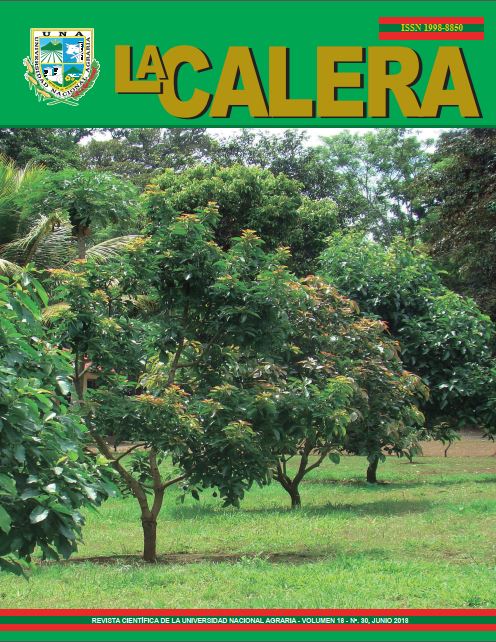Molecular detection of Candidatus liberibacter solanacearum (Zebra Chip) in patato (Solanum tuberosum L,) in Nicaragua
DOI:
https://doi.org/10.5377/calera.v18i30.7737Keywords:
Primer, Lso TX 16/23, Lso ADK, bacterium, causal agentAbstract
Several important phytosanitary problems have been recorded in potato cultivation due to the presence of viruses, bacteria and fungi. In recent years, producers in the departments of Estelí and Jinotega have reported plants with symptoms of the Zebra disease chip caused by the fastidiosa bacterium Candidatus liberibacter solanacearum. The Zebra chip disease has caused large economic losses to potato producers in the country where the production is developed all year. Faced with this problem, the Nicaraguan Institute of Agricultural Technology (INTA), together with the National Agrarian University (UNA), conducted a study between August 2015 and July 2016 with the objective of generating information related to the presence and distribution of Ca. Solanacearum in the above mentioned departments. A total of 162 tissue samples with disease symptoms were collected from four locations in Jinotega and three locations in Estelí during the three cropping cycles. Tissue samples were processed and analyzed at the National Center for Agricultural Research and Biotechnology (CNIA-INTA) to detect causative agent Ca.l. Solanacearum using the molecular primers bound to the bacterium Lso Tx 16/23 and the cleansing gene Lso adk. 50 samples were positive with the Lso Tx 16/23 primer indicating high specificity for the detection of this pathogen, whereas with the Lso ADK primers 42 samples were positive presenting polymorphisms. The bacterium was detected in the areas of El Tayacán and El Zacatón in the department of Estelí and in the department of Jinotega El Mojón, La Palmera and San Gregorio. The highest percentage of aff ection for Ca. L. solanacearum was presented in Jinotega with 52.17% compared to Estelí that presented 22.41% of the samples collected
Downloads
910
HTML (Español (España)) 897

